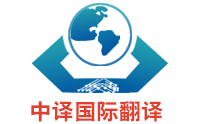

推荐 +MORE
·影视翻译 ·合同翻译 ·科技翻译 ·医学翻译 ·法律翻译 ·金融翻译 ·证件翻译 ·文学翻译 ·图书翻译 ·工程翻译 解决方案 SOLUTIONS 专业流程 WORKFLOW 翻译技术 TRANSLATION TECHNOLOGY 填写询价表 ONLINE INQUIRY时间:2019-02-26 15:01:40 作者:
学术译著总体要求译文内容、体例忠实于原文。直译和意译都可以,今天医学翻译公司给大家总结了一些学术翻译常遇到的问题,希望对大家有帮助,下面一起来看看吧。
Academic translation generally requires that the content and style of the translation be faithful to the original text. Both literal translation and free translation can be used. Today, the Medical Translation Company summarizes some common problems encountered in academic translation, hoping to be helpful to you. Let's take a look at them.
专业术语翻译须准确无误,并尽量采用国内通用译法。
The translation of professional terms should be accurate and adopt the domestic common translation methods as far as possible.
学术作品与一般文学作品不同,专有名词应按一定规范予以统一,以便于学术传播和交流。
Academic works are different from general literary works, and proper nouns should be unified according to certain norms in order to facilitate academic dissemination and exchange.
在处理人名翻译时,目前一般使用新华社译名资料组编、商务印书馆出版的姓名译名手册,如《英语姓名译名手册》《德语姓名译名手册》《法语姓名译名手册》。有些人名如果已有公认的通用译名,虽不规范,也使用该通用译名。如AdamSmith译为“亚当·斯密”,而不译为“亚当·史密斯”。
In dealing with the translation of names, the name translation manuals published by Xinhua News Agency and Commercial Press, such as English Name Translation Manual, German Name Translation Manual and French Name Translation Manual, are commonly used. Some names, if they have been recognized as generic translations, are not standardized, but they are also used as generic translations. For example, Adam Smith is translated as "Adam Smith" instead of "Adam Smith".
地名则以商务印书馆、中国地图出版社出版的《外国地名译名手册》为准,或者以中国地图出版社最新出版的地图或最新版《辞海》为准。另外,一些公司名、机构名应用国内的通用译名,如“IBM公司”不宜译作“国际商用机器公司”。
Place names shall be based on the Handbook of Translating Foreign Place Names published by the Commercial Press and the China Map Publishing House, or on the latest map published by the China Map Publishing House or the latest edition of Cihai. In addition, some company names and organization names should be translated into common domestic names, such as "IBM Company" should not be translated into "International Commercial Machinery Company".
特别提醒译者注意3点:
In particular, translators are reminded of three points:
①正文中的译名原则上都应译出,如译名手册无统一译名,可以与编辑商量后统一译法。
In principle, all translations in the text should be translated. If there is no uniform translation in the translation manual, the translation method can be unified after consultation with the editor.
②特殊情况下,如致谢内容中出现大量人名,或者正文中有太过冷僻的译名,与责编商量后可保留原文。
(2) Under special circumstances, if a large number of names appear in the content of thanks, or there are too remote translations in the text, the original text can be retained after consultation with the editor-in-charge.
③译名使用要一致。在译名第一次出现时,最好在其后标注原文,并将该译名记录下来,以后再出现时使用统一的译名,不必再注外文。
(3) The use of translated names should be consistent. When a translated name appears for the first time, it is better to mark the original text and record the translated name. When it appears again, it is better to use a unified translated name instead of a foreign language.
标点符号应根据中文翻译句式和语法作调整,不必完全拘泥于原文。如很多法学著作,作者为严谨起见喜用长句,中文翻译切不可完全照搬,一逗到底。标点书写格式一律按照中文格式。若出现中外文混杂的句子,可以根据具体情况选择标点。
Punctuation marks should be adjusted according to the sentence pattern and grammar of Chinese translation, without being strictly adhered to the original text. For example, in many legal works, the author likes to use long sentences for the sake of rigorousness. Chinese translation should not be completely copied. The punctuation writing format shall be in accordance with the Chinese format. If there are mixed sentences in Chinese and foreign languages, punctuation can be selected according to the specific situation.
图表中的文字内容一定要完整译出,画面或照片中的特定外文可以不译出。需要提醒译者注意:图表下的出处说明文字,处理方法同注释及参考文献。较复杂的图表,可以与编辑协商由出版社制作,译者译出图表中的文字即可。
The text content in the chart must be translated completely, and the specific foreign language in the picture or photograph can not be translated. Translators should be reminded that the source instructions under the chart, together with annotations and references, should be processed. Complicated charts can be produced by the publishing house in consultation with the editor, and the translator can translate the text in the charts.
建议使用阿拉伯数字表示具体的世纪和年代,如20世纪80年代,不推荐使用“1980年代”。对于年代模糊的说法,正确的用法是:二十世纪六七十年代。错误用法:20世纪六七十年代或20世纪60、70年代。
It is suggested that the use of Arabic numerals to represent specific centuries and years, such as the 1980s, should not be recommended. The correct usage of age ambiguity is the 1960s and 1970s. Misuse: 1960s and 1970s or 1960s and 1970s.
外文著作中常有斜体,表示不同的含义,翻译处理时应该根据不同情况予以处理。如果斜体表示强调,则中文加着重号或者黑体表示;如果斜体属于整段或整句引用,则中文使用区别于正文的字体;如果斜体表示书名或文章名,中文加书名号;如果斜体表示案例名,原则上不译出,如果译出,中文加双引号;如果斜体表示拉丁文或者其他不常用的古文字,中文格式、字体均不变,只需在其翻译后将拉丁文单词放在括号中(使用斜体)。
There are often italics in foreign works, which indicate different meanings. They should be dealt with according to different situations in translation. If italics denote emphasis, Chinese will be highlighted or bold; if italics belong to the whole paragraph or sentence citation, Chinese will use a font different from the text; if italics denote the title of a book or article, Chinese will add the title of a book; if italics denote the name of a case, it will not be translated in principle, if translated, Chinese will be double-quoted; if italics denote Latin or other uncommon ancient texts. Words, Chinese format and font are unchanged, just put Latin words in brackets (italics) after their translation.
原文中出现的重要名称,如果带有缩写式,在第一次出现时注明原文全称,同时附上缩写式。
If there are abbreviations for important names appearing in the original text, indicate the full name of the original text at the first appearance, and attach abbreviations.
对于原作中出现的引文,如果出自经典著作,且该经典著作已有通行中译本,原则上按已有中译本译出,但允许译者有所修改和合理调整。引文量较大者,请译者注明出自何种中译本。
For quotations appearing in the original work, if they come from a classical work and the classical work has been translated into Chinese in general, they should be translated according to the existing Chinese versions in principle, but the translator is allowed to modify and adjust reasonably. For those with large quotations, the translator should indicate which Chinese version they came from.
对于原文一些较为生僻难译的词,建议译者尽量在译文后括注出原文,以便于读者理解。
For some of the more remote and difficult words in the original text, it is suggested that the translator try to include the original text after the translation so as to facilitate the reader's understanding.
这是学术翻译作品所特有的翻译规范,因为学术作品最后往往附有关键词索引或者人名索引,通常这些索引的页码并不根据译文重新制作,而是保留原书页码。
This is a unique translation criterion for academic translation works, because academic works often end up with keyword index or person name index, usually the pages of these indexes are not reproduced according to the translation, but retain the pages of the original book.
要使这些索引发挥作用,标注原书页码必不可少。标注方式通常是以原书每页开始第一个单词为准,在相应中文译文处标注页码。如果译文顺序与原文顺序相差较大,也可以选择最利于读者检索到原文页码的方式标注。
To make these indexes work, it is necessary to mark the page number of the original book. The annotation method is usually based on the first word at the beginning of each page of the original book, and the page number is marked at the corresponding Chinese translation. If the order of translation is different from that of the original text, we can also choose the most convenient way to mark the page number of the original text for readers to retrieve.
中译国际翻译(北京)有限公司
China International Translation service Co., Ltd.


服务范围
全国20多家分支机构,
用本地译员满足客户需求

翻译资质
政府机构认可的涉外翻译公司,
精通全球80多种语言

质量保证
终身免费质保,
为您提供最放心的服务